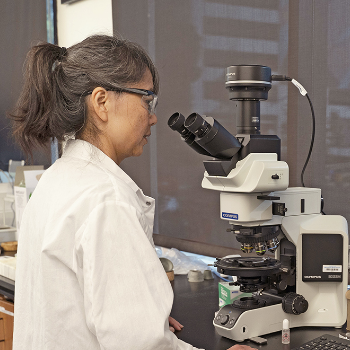About Us
We work with humility, tenacity, and perseverance as we strive to provide patients with hope that better options are on the horizon.

About Neurocrine Biosciences
Neurocrine has a heritage based in science and collaboration that remains the hallmark of our culture today.
From two people to a company of more than 1,200, our
purpose and values
remain rooted in the needs of underserved patients worldwide.
Our History
Neurocrine was founded in 1992 by Wylie Vale, Ph.D., of the Salk Institute for Biological Studies, where he contributed to Nobel Prize–winning work in endocrinology, and award-winning Stanford University neurologist Lawrence Steinman, Ph.D. Since then, we have been developing treatments for rare and under-addressed diseases, sometimes in collaboration with other pharmaceutical companies.
The company’s diverse portfolio includes FDA-approved treatments for tardive dyskinesia, chorea associated with Huntington’s disease, endometriosis and uterine fibroids, as well as a robust pipeline including multiple compounds in mid-to-late phase clinical development across our core therapeutic areas.

Neurocrine co-founder, Wylie Vale, Ph.D.

Neurocrine co-founder, Lawrence Steinman, Ph.D.

Meeting the needs of underserved patients remains our purpose today and as we move into the future.

Our
Purpose
is to relieve suffering for people with
great needs, but few options.
great needs, but few options.
Our Values
Passion
We are driven and love what we do. We are committed to our goals and to making a difference.
Integrity
We do the right thing for patients and our community. We take accountability. We speak up.
Our Story
Hear more about Neurocrine from those who know us best—our employees

